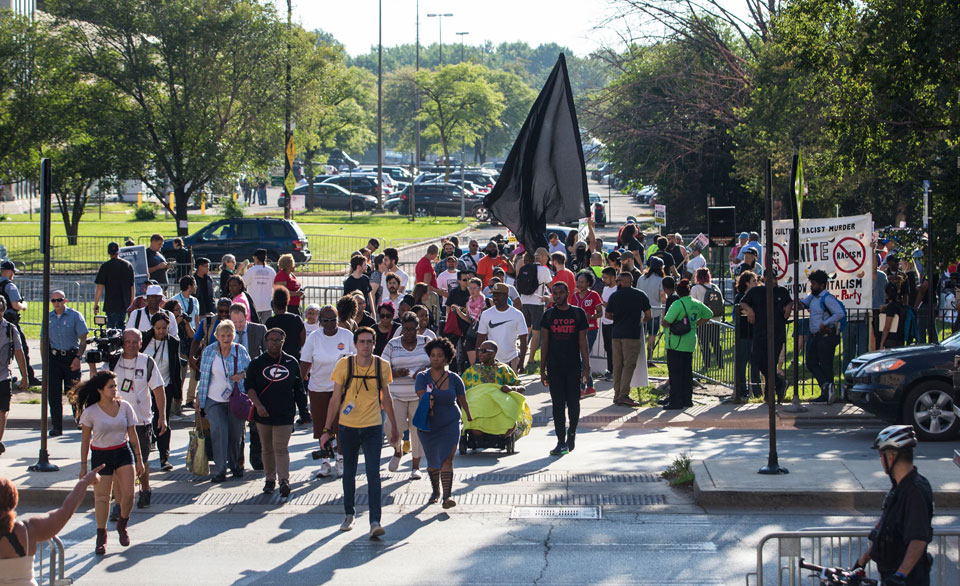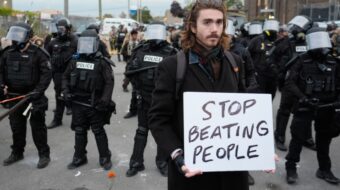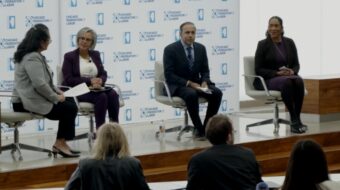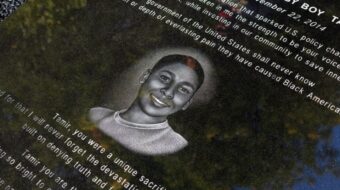
CHICAGO – On October 20, 2014, Laquan McDonald, 17, was shot 16 times by Chicago Police Officer Jason Van Dyke. Nearly four years later Van Dyke is the first active duty police officer to be charged with first-degree murder. The coverup by police and subsequent late release by the mayor’s office of the dashcam video to the public has caused outrage.
Frank Chapman, the national field organizer of the Chicago Alliance Against Racist and Political Repression compares this situation to the widespread lynchings not too long ago in U.S. history. Peoples World interviewed Chapman at his group’s office in this city’s South Loop section.
When asked about his initial impressions of the trial, Chapman said, “I think the jury selection was very lopsided. The judge gave the defense wide latitude in terms of eliminating blacks from the jury. They were so systematic in eliminating blacks from the jury that the defense asked the judge to intervene. The judge refused to intervene and said the defense was being racially neutral.”
The 12-person jury is composed of seven whites, three Latinos, one African American, and one Asian American. Eight of the jurors are women and four are men.
Chapman said the evidence presented by the prosecution, attesting to the guilt of the police officer, was overwhelming and scientifically presented so that there was no doubt in his (Chapman’s) mind that Van Dyke was guilty. The presentation was so powerful, he said, that people in the audience became “emotionally disturbed.”
The forensic scientist said that the first shot grazed McDonald’s skull and neck, the second shot hit him in the neck and the remaining 14 shots were fired after he hit the ground. These shots apparently caused tremendous bleeding. Chapman said hearing and viewing the evidence reminded him of what one would hear in courtrooms after the aforementioned illegal hangings, at least in the cases of those that made it into a courtroom.
Chapman said that there had been a coverup of the shooting of McDonald, with several police officers, he pointed out, writing false reports. He noted that there were no criminal charges filed against Jason van Dyke for 400 days after the shooting.
“For 400 days the mayor and city council were quiet and they entered into a settlement with the McDonald family for five million dollars. The movement calls this hush money because part of the settlement was an arrangement that the dashcam video not be released,” Chapman said.
Chapman and others see the current criminal trial of Van Dyke resulting from the movements for black lives and community control of the police.
The movements responded to the “coverup surrounding the Laquan McDonald murder,” Chapman said, revealing “the level of corruption in the Chicago Police Department, mayors office and city council.”
The Chicago Tribune reported that on Sept. 25 the defense for Van Dyke asked to call an additional policeman to testify in Van Dyke’s defense but the judge, Vincent Guaghan, denied the request.
One of the tactics used by the Van Dyke defense has been to portray McDonald as having been an “out of control” teen.
A CTA card that belonged to a retired veteran was found on McDonald’s body after the shooting. The Van Dyke defense argued that the card had been used to travel around the city in the hours leading up to the murder. The judge called the evidence that McDonald had used the card “weak” and rejected the defense’s bid to present the card as evidence. The judge noted that there was no surveillance camera evidence of McDonald having traveled on any CTA buses.
The judge said that if a card was recovered from the body it did not necessarily mean he had used it.
The Van Dyke defense continued later to try to hammer away at the CTA card evidence, claiming the CTA had found that the card was deactivated and had not been used after McDonald’s death.
In any case, use of the CTA card by McDonald or non-use by him has no relevance to excusing an officer from firing 14 shots into an unarmed man who was on the ground. The judge in this case seems to agree.










